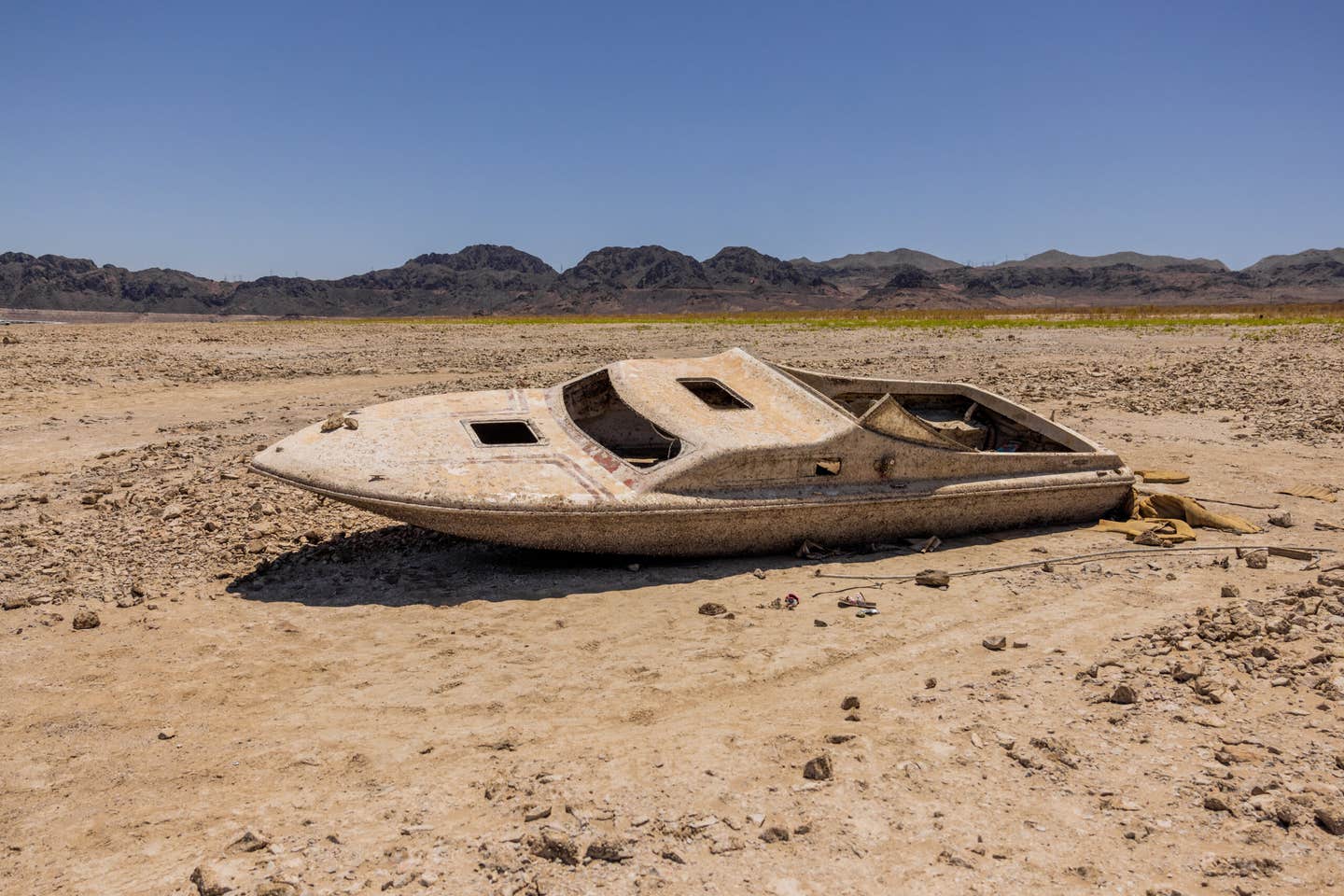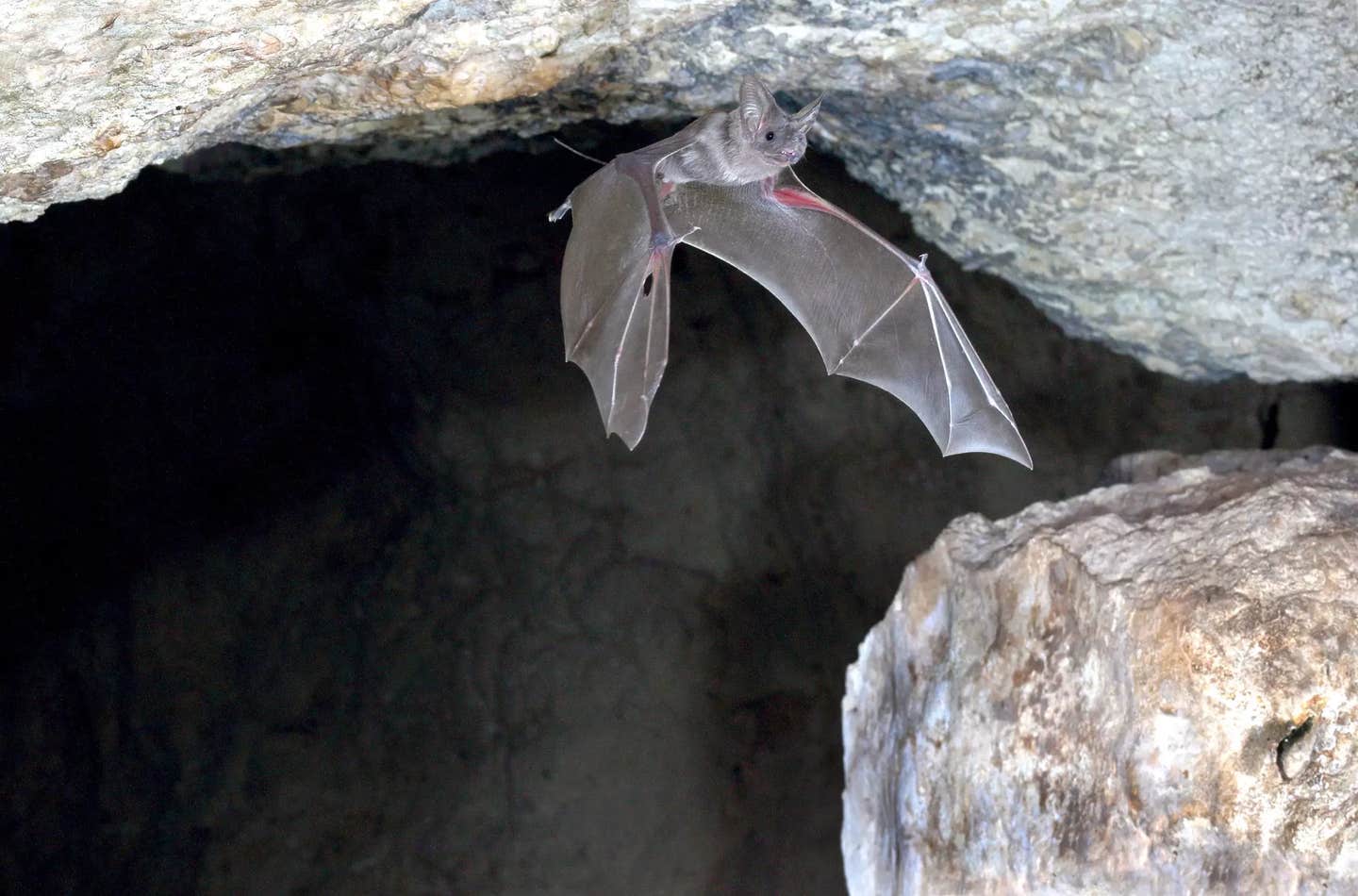Startling research finds half of world’s largest lakes losing water
Scientists reveal a startling global phenomenon – more than 50 percent of the world’s largest lakes are losing water.

A previously submerged boat on Lake Mead on June 14, 2022 in Boulder City, Nevada.)
Roger Kisby[May 22, 2023: Staff Writer, The Brighter Side of News]
A previously submerged boat on Lake Mead on June 14, 2022 in Boulder City, Nevada. (CREDIT: Roger Kisby)
In a new, comprehensive study, scientists reveal a startling global phenomenon - more than 50 percent of the world's largest lakes are losing water. The study, published today in the reputed Science journal, identifies the unsurprising causes as climate change and unsustainable human consumption. However, not all hope is lost.
The groundbreaking report's lead author, Fangfang Yao, a CIRES visiting fellow and currently a climate fellow at the University of Virginia, confirms that the implications aren't wholly despairing. The newly developed methodology for monitoring lake water storage trends and the factors influencing them will provide essential insights to water managers and communities worldwide. This data can then be used to formulate strategies to better preserve our crucial water sources and the ecosystems they support.
“This is the first comprehensive assessment of trends and drivers of global lake water storage variability based on an array of satellites and models,” Yao said. The motivation behind this research stems from the ongoing environmental crises besieging some of Earth's largest water bodies, such as the Aral Sea's desiccation straddling Kazakhstan and Uzbekistan.
Yao, along with colleagues from the University of Colorado Boulder, Kansas State University, France, and Saudi Arabia, developed a unique technique to measure the changes in water levels in almost 2,000 of the world's largest lakes and reservoirs. This selection signifies 95 percent of Earth's total lake water storage.
Related Stories
Utilizing three decades of observations from various satellites, combined with models, the team was able to quantify and attribute trends in global lake storage. Freshwater lakes and reservoirs, accounting for 87 percent of the planet's water storage, provide a crucial resource for both human consumption and maintaining Earth's ecosystems.
Lakes are a primary water source for a large segment of humanity, superseding even rivers. Unfortunately, monitoring these invaluable reservoirs has not been as thorough, making Yao and his team's study a significant milestone.
"We have pretty good information on iconic lakes like Caspian Sea, Aral Sea and Salton Sea, but if you want to say something on a global scale, you need reliable estimates of lake levels and volume," adds Balaji Rajagopalan, a CIRES fellow, professor of engineering at CU Boulder, and co-author. This novel method provides a comprehensive perspective on global lake level changes.
Looking northeast, the Imperial Valley and Salton Sea in southern California is photographed from the Earth-orbiting Gemini-5 spacecraft. (CREDIT: NASA)
The researchers utilized a whopping 250,000 lake-area snapshots taken by satellites from 1992-2020, enabling them to survey the area of 1,972 of Earth's largest lakes. They collected water levels from nine satellite altimeters and used long-term water levels to reduce any uncertainty. Where lakes lacked a long-term level record, recent water measurements from newer satellite instruments were incorporated.
The findings are indeed staggering, with 53 percent of the global lakes experiencing a decline in water storage. This loss equates to 17 times the volume of Lake Mead, the United States' largest reservoir.
The team exploited recent advancements in water use and climate modeling to elucidate these natural lake trends. Yao explained that climate change and human water consumption primarily accounted for the global net decline in natural lake volume. They found water losses in about 100 large lakes. Many of these losses, like the desiccations of Lake Good-e-Zareh in Afghanistan and Lake Mar Chiquita in Argentina, were previously unrecognized.
Explore your area in the map below or the linked, larger map. Pink depicts drying reservoirs; dark red, drying natural lakes. Dark blue marks natural lakes increasing in water storage; and light blue for existing reservoirs doing the same. Purple dots indicate new, filling reservoirs. (CREDIT: Yao et al., Science (2023))
Interestingly, lakes in both dry and wet global regions are experiencing volume losses. The findings pointed out a more widespread drying trend in humid tropical and Arctic lakes than previously assumed.
The study also evaluated storage trends in reservoirs and found that nearly two-thirds of Earth's large reservoirs suffered significant water losses. "Sedimentation dominated the global storage decline in existing reservoirs," states Ben Livneh, another co-author, CIRES fellow, and associate professor of engineering at CU Boulder. According to Livneh, in long-established reservoirs—those filled before 1992—sedimentation has played a more significant role in storage decline than either droughts or heavy rainfall years.
Widespread storage decline in large global lakes from October 1992 to September 2020. (CREDIT: Yao et al., Science (2023))
However, the researchers found that not all lakes are shrinking. About 24 percent of global lakes recorded notable increases in water storage. These expanding lakes are primarily located in underpopulated regions such as the inner Tibetan Plateau and the Northern Great Plains of North America, as well as areas with new reservoirs like the Yangtze, Mekong, and Nile river basins.
Considering the enormity of the situation, the authors estimate that approximately one-quarter of the world's population, nearly 2 billion people, live within the basin of a depleting lake. This highlights the urgent need for sustainable water resources management that incorporates the impacts of human consumption, climate change, and sedimentation.
Attributions of significant volume changes in natural lakes. (A) Chief determinants for volume losses. (B) Chief determinants for volume gains. PET, potential evapotranspiration. The inset pie charts show the aggregate impact (by magnitude) of each determinant on the basis of relative contributions. For clarity, lake volume changes that are not significantly attributable (N/A) are not shown in panels (A) and (B), but their proportions are included in the insets. (CREDIT: Yao et al., Science (2023))
Livneh points out the silver lining in this grim scenario, "If human consumption is a large factor in lake water storage decline, then we can adapt and explore new policies to reduce large-scale declines."
Indeed, evidence of such successful intervention has already been witnessed in one of the lakes under study, Lake Sevan in Armenia. Lake Sevan has seen a rise in water storage over the last 20 years, a development the researchers attribute to the enforcement of conservation laws on water withdrawal since the early 2000s.
This groundbreaking study not only serves as a warning siren about the worrying trends of water depletion in our largest lakes but also offers a roadmap for effective solutions. With concerted efforts towards sustainable water management, we might yet turn the tide against this global crisis.
For more green news stories check out our Green Impact section at The Brighter Side of News.
Note: Materials provided above by The Brighter Side of News. Content may be edited for style and length.
Like these kind of feel good stories? Get the Brighter Side of News' newsletter.
Joseph Shavit
Head Science News Writer | Communicating Innovation & Discovery
Based in Los Angeles, Joseph Shavit is an accomplished science journalist, head science news writer and co-founder at The Brighter Side of News, where he translates cutting-edge discoveries into compelling stories for a broad audience. With a strong background spanning science, business, product management, media leadership, and entrepreneurship, Joseph brings a unique perspective to science communication. His expertise allows him to uncover the intersection of technological advancements and market potential, shedding light on how groundbreaking research evolves into transformative products and industries.



